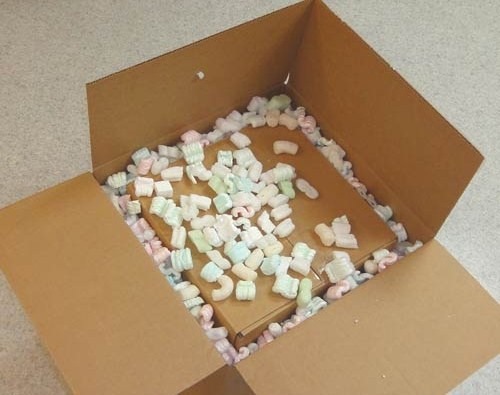 There’s is nothing worse than receiving news that the fragile item you shipped arrived in a heap of broken mess. If you ship fragile items as a business, it is your responsibility to make sure that every package you sent reaches your customers in excellent condition.
There’s is nothing worse than receiving news that the fragile item you shipped arrived in a heap of broken mess. If you ship fragile items as a business, it is your responsibility to make sure that every package you sent reaches your customers in excellent condition.
Attaching “Handle with Care” and “Fragile” labels on the packages is not enough to ensure that they will be handled with utmost care or that they will not experience bumps and falls while going through shipping machinery. As a seller, you should take time in properly packing your fragile items. If packaged appropriately, fragile items can survive the rough shipping environment and arrive in their best forms.
They key to successfully shipping fragile items is protecting them from outside impact and preventing collision with other items inside the box. Double boxing is an effective method of keeping fragile items safe from damage during shipping. The idea behind this packing technique is that the outer box takes all of the destructive impacts and the inner box holds the internal parts isolated from those shocks.
Double boxing is ideal when shipping fragile items in their original packaging. While the manufacturer’s packaging is designed to provide optimum protection for shipping the product once, it may not be built to endure another exposure to the rough shipping environment. Also, original packaging is usually designed for shipments on pallets, which provide protection in bulk but not for single-piece shipments. Thus these packages must be protected by an outer box to prevent any risk of damage.
For extremely fragile items such as glass, crystal, ceramic and electronics that do not have their original packaging, it is best to pack them in an inner box before placing inside a slightly larger outer box. Whether the original packaging is still available or not, here are tips on how to properly double box your fragile items.
If using the original packaging, make sure that the box, padding and cushioning materials that come with it are still in good condition. If not, make necessary repairs using heavy-duty tape. If the original packaging has already lost its integrity, it is best to discard it and use new packing materials instead.
When using a new inner container, choose a sturdy box that is at least 2-inches larger than the item on all sides, top, and bottom. Place a 2-inch layer of packing materials such as packing peanuts, bubble wrap or crumpled paper (use appropriate filler depending on the weight of the item) in the bottom of the box.
Wrap your fragile item in a protective material such as tissue, paper or cardboard stock (depends on how fragile and delicate the items) before wrapping it in 2 layers of bubble wrap. Secure the wrap in place with tape.
Place the wrapped item inside the box, on top of the packing materials. If shipping several items in one package, individually wrap each item and arrange in the center of the box. Make sure that each item is well-wrapped with cushioning material to protect it from contact with other pieces in the box.
Fill the remaining spaces in the box with more packing materials. The idea is to pack the box well to restrict movement during transit. Close the box and secure with packaging tape.
For the outer box, use a larger cardboard box that is at least two to three inches than the inner box. Fill the bottom with a layer of packing materials and place the inner box on top, center. Fill the remaining spaces with more packing materials until there are no spaces on the sides and top of the outer box and the inner box is kept in the center. Close the outer box and seal with tape. Make sure to reinforce all seams and edges, including those on the bottom of the box, with heavy-duty packaging tape.
Address, label and take the double-boxed package to your local post office or shipping company.
